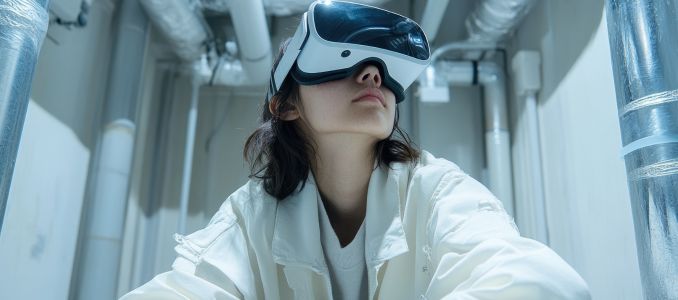
How Digital Tools and Data Are Revolutionizing Confined-Space Rescue Training
Explore how safety professionals are using VR, blended learning, and analytics to transform confined-space rescue training, reduce fatalities, and ensure OSHA compliance.
By Michael HogervorstJun 26, 2025
Emerging digital tools, blended-learning models, and data-driven drills are transforming how safety professionals prepare for and manage confined-space emergencies.
Introduction
Confined-space incidents continue to pose one of the most serious hazards across manufacturing, utilities, and process-industry operations. Despite strict permit-to-work systems, OSHA reports an average of 92 fatalities per year in confined-space environments over the last five years, which often involves rescuers lacking proper training. Today, advances in digital tools, blended-learning models, and data analytics are helping safety professionals deliver more measurable preparedness programs that protect both entrants and their rescue teams.
The changing face of confined-space risks.
Traditional confined-space hazards such as oxygen deficiency, toxic atmospheres, and entrapment have been exacerbated by new industry trends. Biomanufacturing, battery recycling, and automated material-handling systems introduce novel chemicals and mechanical pinch points. Recent NIOSH FACE reports indicate that nearly 60% of confined-space fatalities involve untrained rescuers attempting improvised saves.
Modern confined space rescue training programs are evolving, integrating digital stimulations and virtual-reality drills to mirror real-world complexity. Trainees begin with online modules on atmospheric testing before moving into mixed-reality environments that challenge decision-making under pressure.
Blended learning and simulation technologies.
Blended learning combines online theory with hands-on simulation to balance accessibility and realism. Participants start with e-modules covering hazard recognition, permit systems (29 CFR 1910.146), and rescue strategy frameworks. Interactive animations guide trainees through atmospheric testing procedures, retrieval-rig setup, and communication protocols. Once theoretical foundations are secure, learners transition to mixed-reality simulators or VR environments.
In a mixed-reality drill, trainees wear augmented-reality headsets that overlay digital gauges and hazard warnings onto a physical mock-up of a storage tank. They practice inserting gas probes, interpreting readouts, and coordinating headset-based voice commands. Meanwhile, instructors monitor performance metrics, i.e., reaction times, probe placement accuracy, and procedural compliance, and adjust scenarios on the fly to challenge decision points. A European process-chemicals plant reported that, after implementing VR-enhanced rescue drills, trainees demonstrated a 25% reduction in task completion errors compared to traditional exercises.
Data-driven drill design.
The next frontier lies in capturing detailed performance data to refine training design continuously. Platforms record every trainee’s timing on critical steps, such as donning self-contained breathing apparatus (SCBA), rigging tripod systems, and executing lift turns. Heat-map visualizations highlight chokepoints where trainees hesitate or take unsafe shortcuts. Trainers can then customize follow-up modules or remedial sessions for individuals or teams.
A North American utility used analytics from its rescue-training center to identify that over 40% of trainees struggled with anchoring harnesses correctly. By introducing a short micro-learning video addressing common errors, the organization reduced recertification failure rates by 30% in the next cycle. This data-driven approach ensures resources focus on true competency gaps rather than generic retraining.
Integration with competency management systems.
Formalizing training delivery is only half the battle; maintaining certification currency completes the safety loop. ISO 45001 emphasizes the need for “competence, training and awareness” under clause 7.2, mandating documented records and periodic review. Dedicated competency platforms enable safety managers to upload completion certificates, track expirations, and schedule refresher alerts automatically.
By linking training data to permit-to-work workflows, supervisors can verify that only current, qualified personnel enter confined spaces. Automated dashboards generate audit-ready reports for regulators, insurers, and executive reviews. This integration eliminates manual logbooks and spreadsheet errors, freeing safety teams to focus on proactive risk assessment instead of administrative catch-up.
Best practice recommendations.
To maximize the impact of modern rescue-training programs, OHS professionals should adopt these practices:
Risk-prioritized scheduling